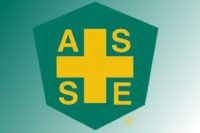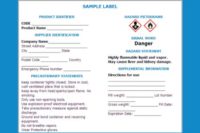 The American Society of Safety Engineers (ASSE) has suggestions for making the task of complying with the revised Hazard Communication Standard (HCS) more manageable.
The American Society of Safety Engineers (ASSE) has suggestions for making the task of complying with the revised Hazard Communication Standard (HCS) more manageable.
Changes announced this week by OSHA will bring the HCS into alignment with the United Nations Globally Harmonized System (GHS) of chemical classification. The revised GHS HCS standard now focuses on an employee’s right to understand the hazards of materials they come into contact with while on the job. U.S. Secretary of Labor Hilda Solis, it will reduce confusion in the U.S. workplace, especially for low wage and low literacy workers.
The HCS will take effect 60 days after its March 26th Federal Register publication date. Companies that work with chemicals are expected to have trained their employees on how to read the new material safety data sheets (MSDS) and labels by June 1st 2013, and to have all employee training completed by June 1st, 2016.
A recent ASSE webinar titled ‘GHS and HCS Crash Course in Compliance ’warned SH&E professionals that they are about to get inundated with changes to current MSDS and labels that must be revised, rewritten and republished in order to comply with new GHS regulations and HCS.
Where to start? The ASSE recommends that companies and their employees become familiar with the new identifier symbols, which have been redesigned to include a red border. A new symbol has also been added to the group under the jurisdiction of GHS, which indicates that a chemical is an environmental hazard.
“The GHS requires consistent communication in labeling,” explained ASSE member Glen Trout, President and CEO of Chicago-based MSDSonline. Trout suggested that the earlier a company begins educating themselves and their employees about GHS and its implementation, the easier this major transition will be. Companies will not be mired with compliance requirements at the last minute.
The ASSE is encouraging companies to begin a dialogue with their employees to ensure that they understand the changes. They should also talk to their chemical suppliers to find out their plans to transition to GHS.
Software is available to help manage the multitude of changes to MSDS and labels that SH&E professionals will be tasked with.
OSHA estimates that once GHS is fully implemented, employers will save approximately $32.2 million, as a result of higher efficiency in transporting products around the globe, as well as a decrease in workers compensation and loss work time due to chemical exposure.
Get started on GHS compliance early, urges ASSE

Looking for a reprint of this article?
From high-res PDFs to custom plaques, order your copy today!







